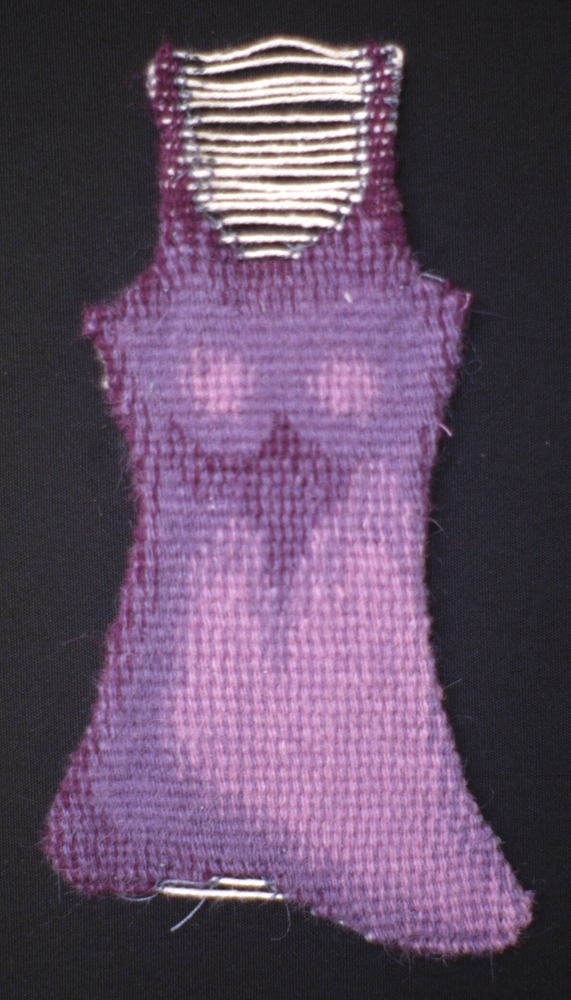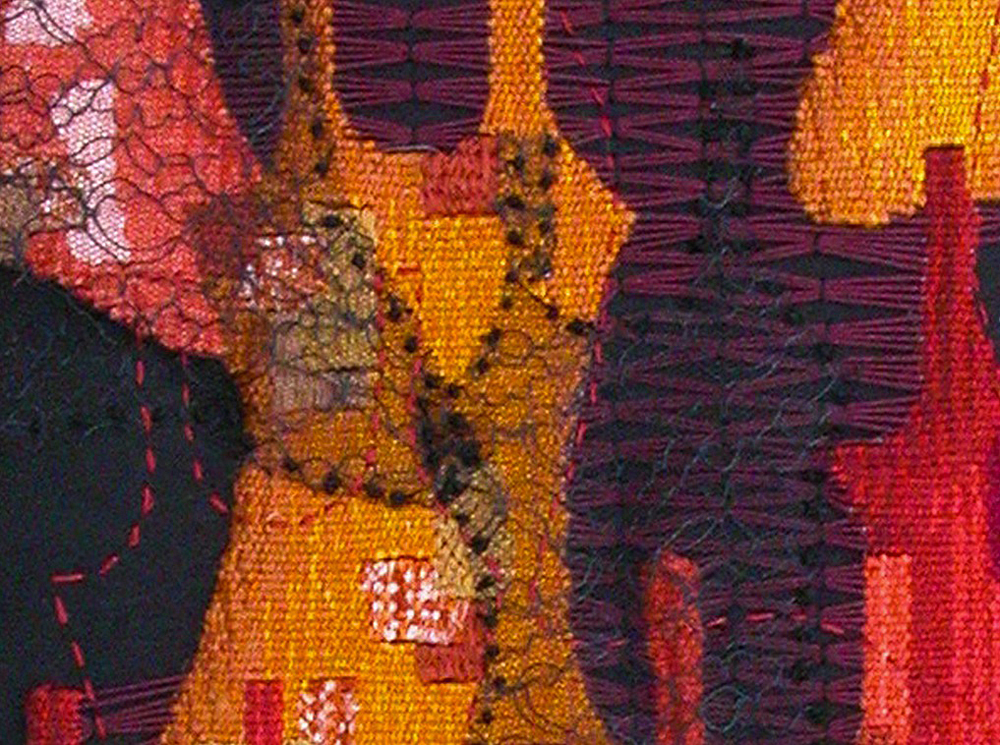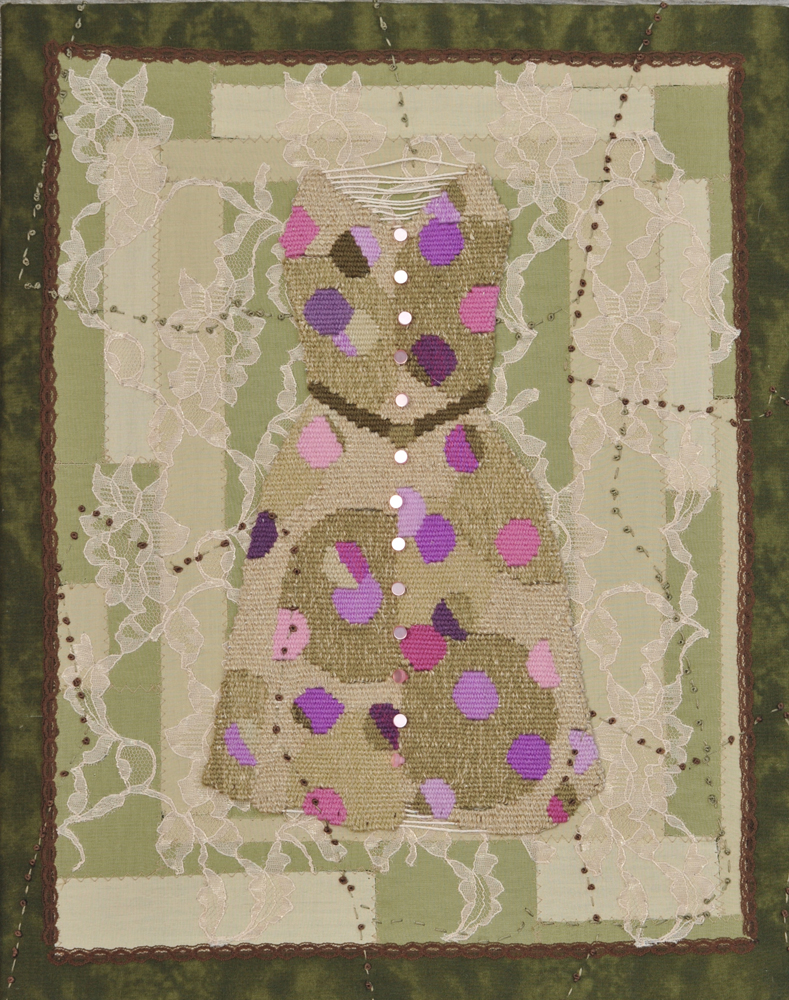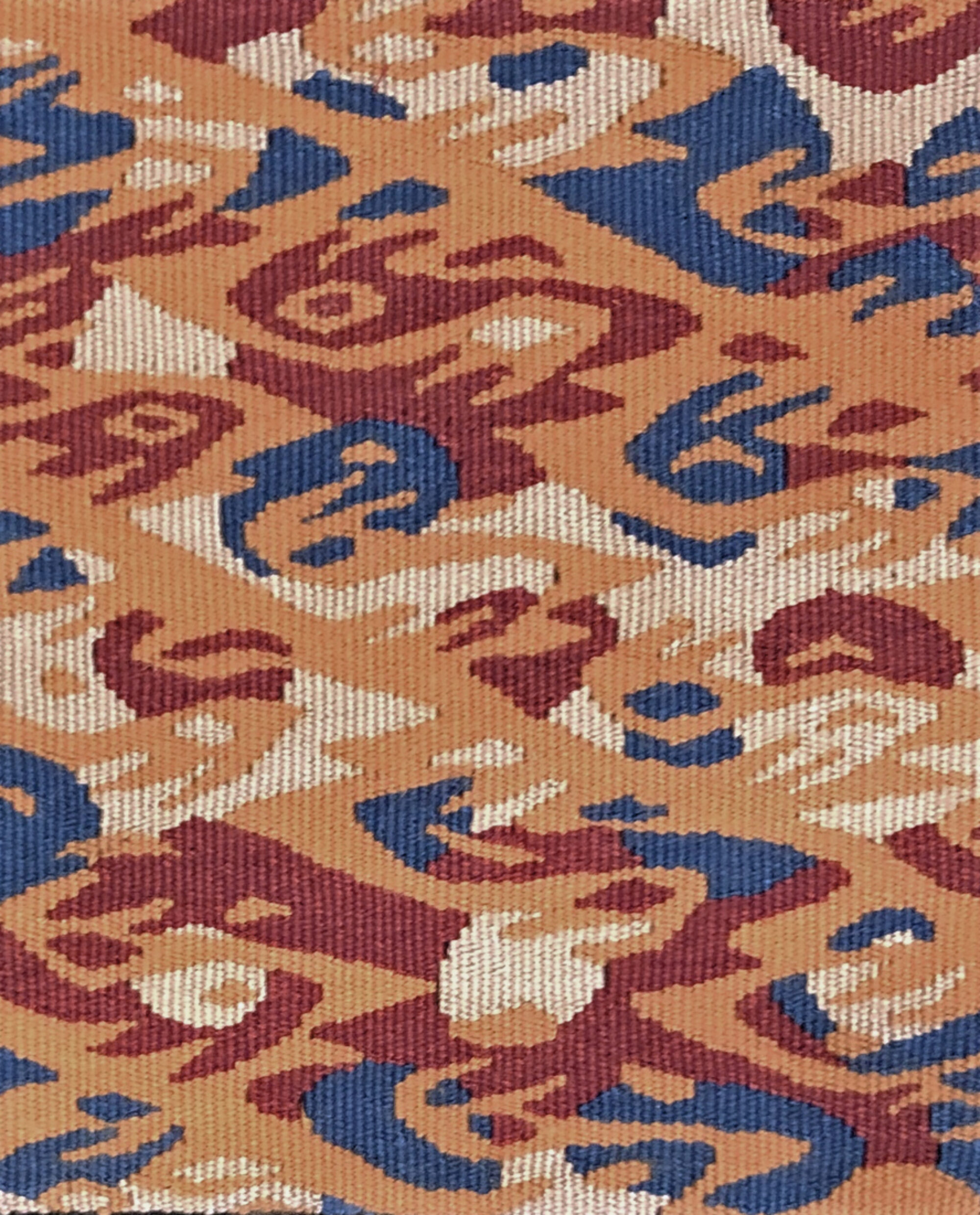This article was first published in the American Tapestry Alliance newsletter, Tapestry Topics, Vol. 38, No. 2, Summer 2012.
My training as a tapestry weaver comes from traditional roots. Going through an apprenticeship that focused on classical French weaving techniques and then weaving as a studio weaver for over five years producing larger sized, flat tapestries that prioritized the image, refined a certain set of skills. I love the control that those techniques offer and I love the economy of means that was developed by weavers over many generations as they refined the systems that do so much with so little.

The first tapestry that I wove outside the proverbial box was part of a group project that my regional tapestry group, TAPS, undertook. My tapestry was a small, shaped tapestry. The shape of the tapestry was a slip. I had started weaving small format tapestries while I was in graduate school because I could manage smaller pieces along with all of the work that being in school entails. I have continued to weave shaped tapestries and most of them are based on garments, or fragments of cloth. This relates to my admiration for the rendering of drapery in medieval tapestry. The increasing dimensionality in the treatment of the clothing during that time reflects the shifts going on in image making as the spiritual focus of the Medieval period transitioned into the humanism of the Renaissance. The physical world of the body was no longer seen as antithetical to the spiritual world. Late medieval tapestries are a delightful combination of both ways of looking at the world. The growing volume of the body beneath the clothing is combined with a flat and highly patterned picture plane whose interest in landscape is still primarily for its symbolic value, and in which architecture’s principal role is as a device to frame scenes within a continuous narrative.
Using garment shapes in my work pays homage to the fabulous skills of the weavers who came before us, but it also taps into a certain feeling of melancholy, or loss. For these are clothes without a body. They are the residue, or perhaps, the proof, of a life. And, they are always those of a female.

A few opportunities for experimentation present themselves as a consequence of working small and weaving shaped pieces. One of those is mounting. As soon as one begins to mount tapestries on a backing, the backing itself becomes part of the work and requires consideration. My first experimentation began with using a variety of materials for the covering on the frame, including printed fabrics.
Another opportunity to explore came about as a byproduct of the shaping of the tapestry. My tapestries do not employ scaffolded warps, so I always have cut warps with which to contend. In shaped work the spaces are sometimes so small that cutting and sewing the warps to the back of the tapestry becomes difficult. I usually use colored warps because of that. In Untitled # 127 I decided to create decorative patterns by sewing the visible warps into patterns. I have always enjoyed sewing and so, once I took the first step stitching over the mounted tapestry, all sorts of ideas popped into my head. I started using French knots and a large running stitch to extend, or respond to, the tapestry itself.

Tapestry is both deliciously, and frustratingly, dense and opaque. I found that the layers in both form and content that began to emerge as the result of the surface work I was doing very appealing. I have incorporated vintage linens, voided lace, buttons and beads in my recent work. The possibilities are rich and numerous.

I do all of my surface work after the tapestry is mounted. The cloth covered frame acts as an embroidery hoop. I employ a small curved needle and a beading needle. Both of those can be used along the edges where the frame is directly under the mounting cloth and one cannot sew through to the back of the cloth.

As a tapestry weaver I am a planner, not in the “painted cartoon” meaning of the word, but I am not an improvisational weaver. However, I find that the surface work I do requires no planning. The “one step leads to another” approach works beautifully for me in this phase. After the tapestry is sewn onto the cloth covered frame, I add whatever additional fabrics or bits of fabric I am using, thinking about the placement of the fabric in terms of two dimensional design concepts. The stitching, knots and beading are applied after the fabric embellishments and I see those conceptually as an additional layer. The surface work grows organically, each layer responding to what has come before. This approach is a welcome contrast to the methodical, row-by-row reality of tapestry weaving. I believe that the various technical methodologies employed in making an object impact the experience one has in looking at the work. In other words, the processes employed in making an object are part and parcel of both the form and the content, and in turn, influence the experience of the viewer.
Where next?
